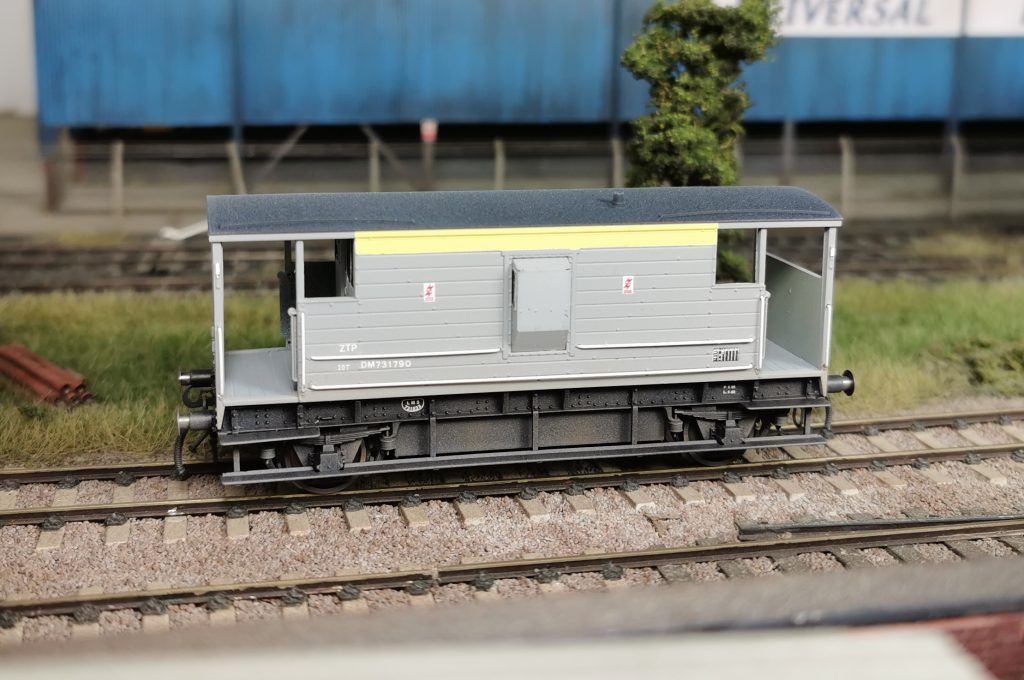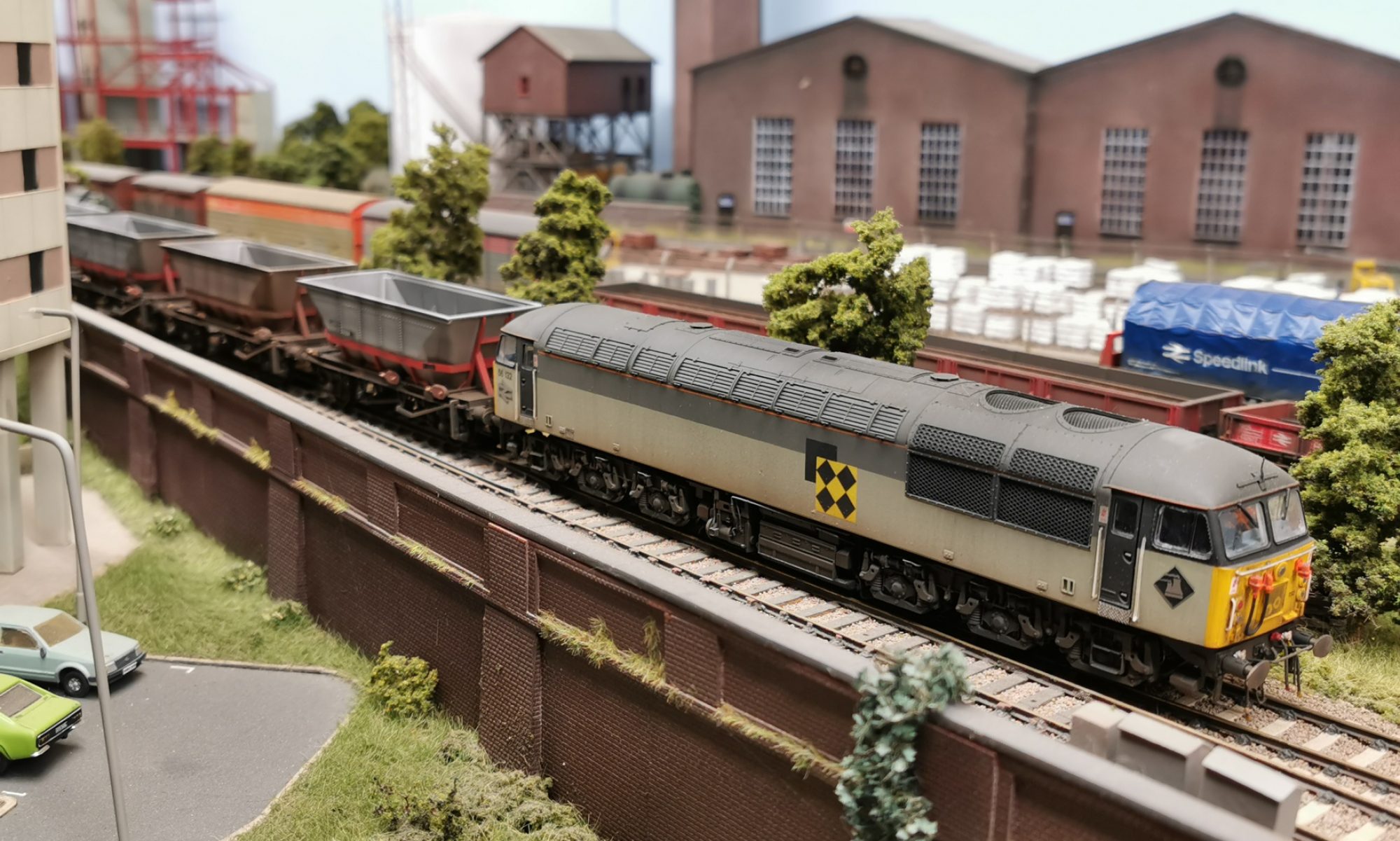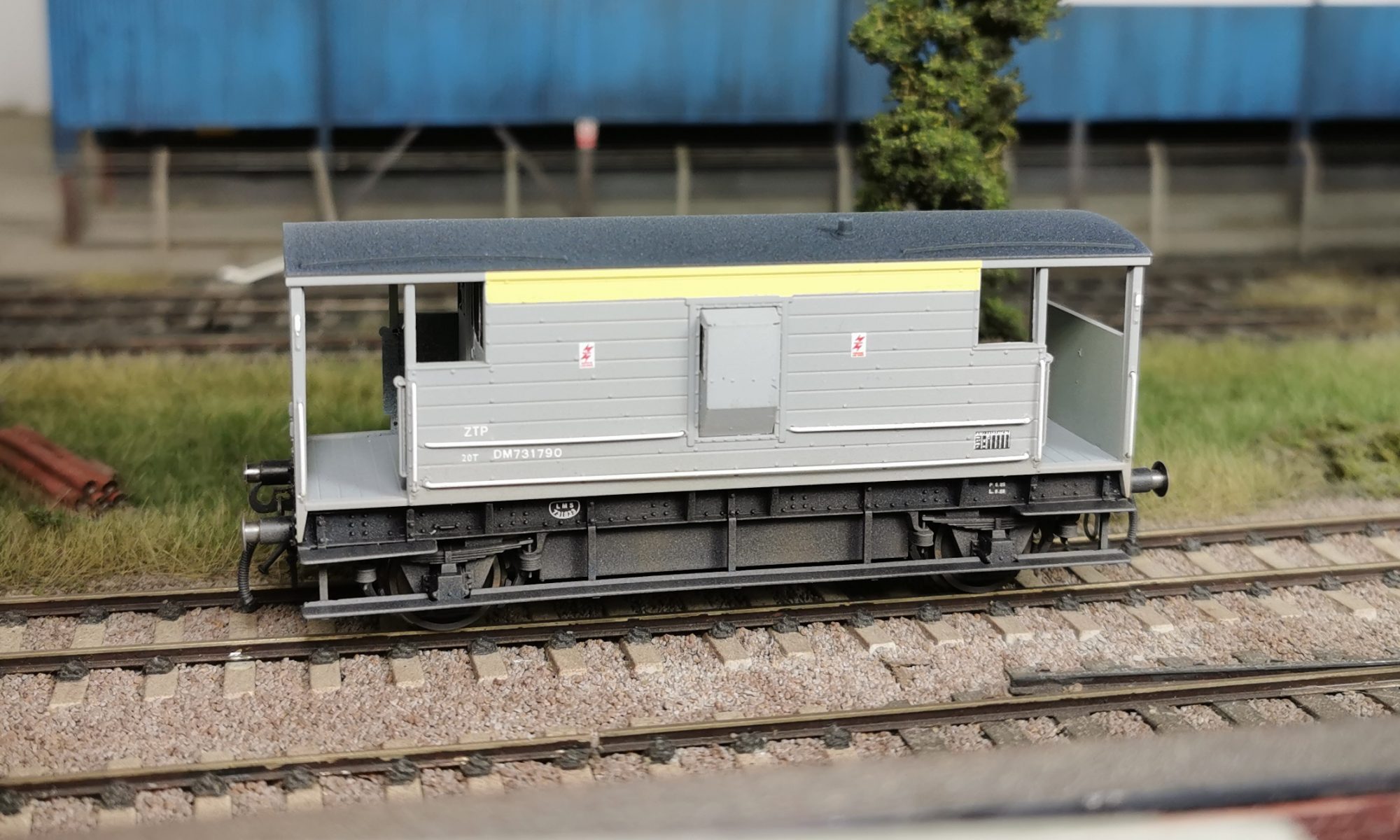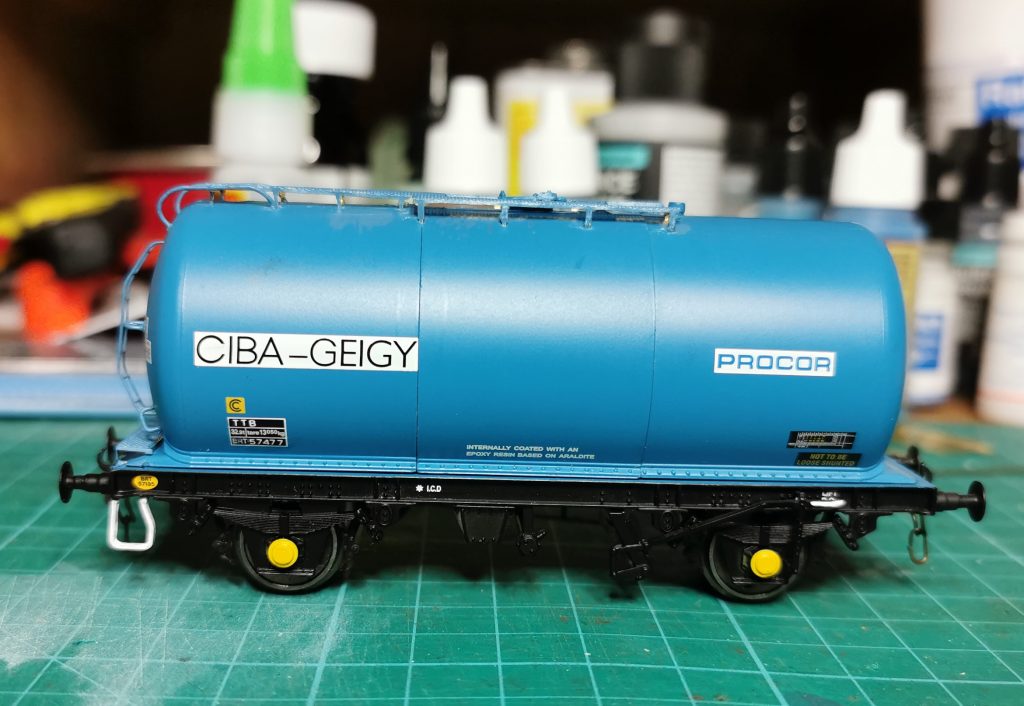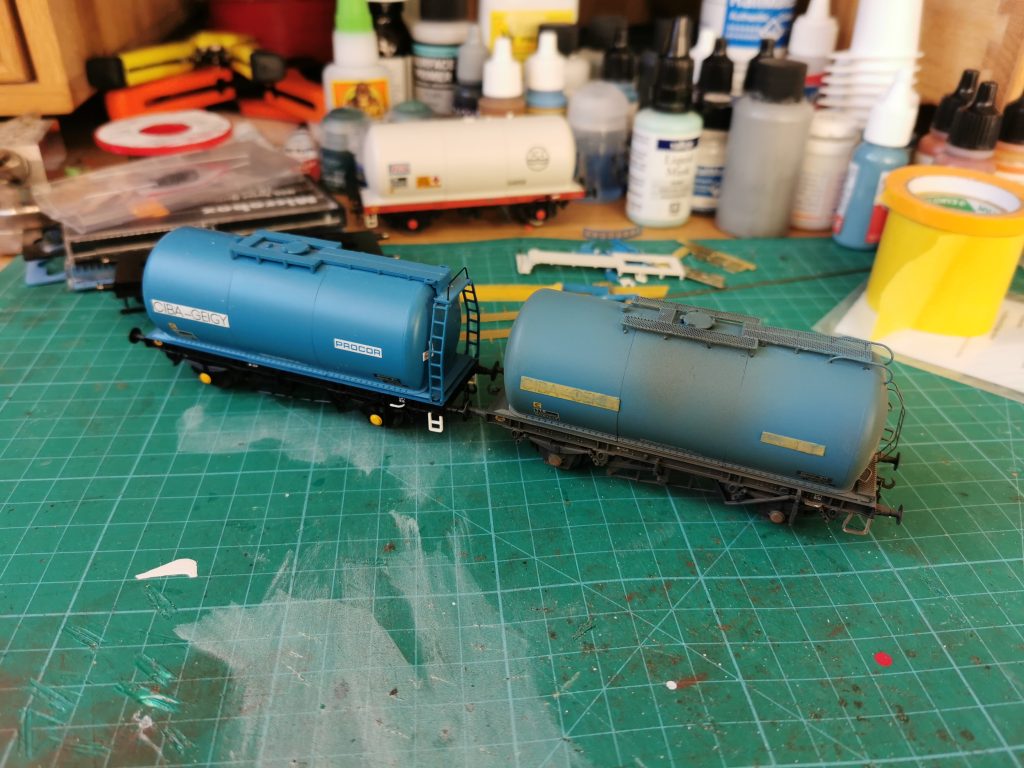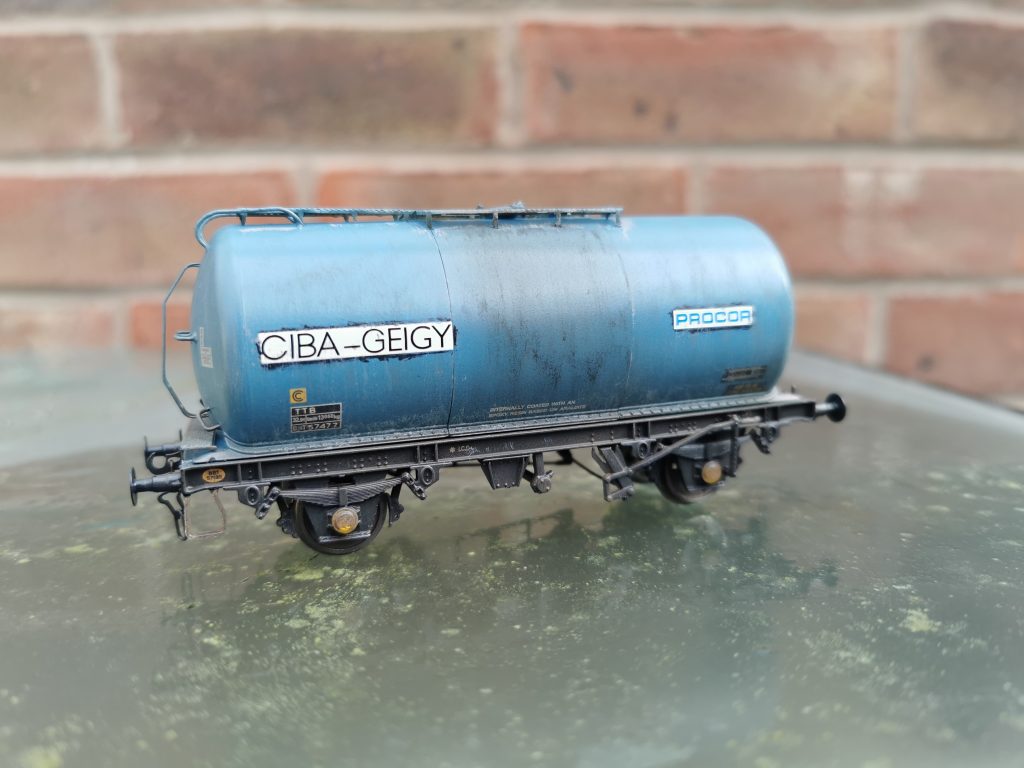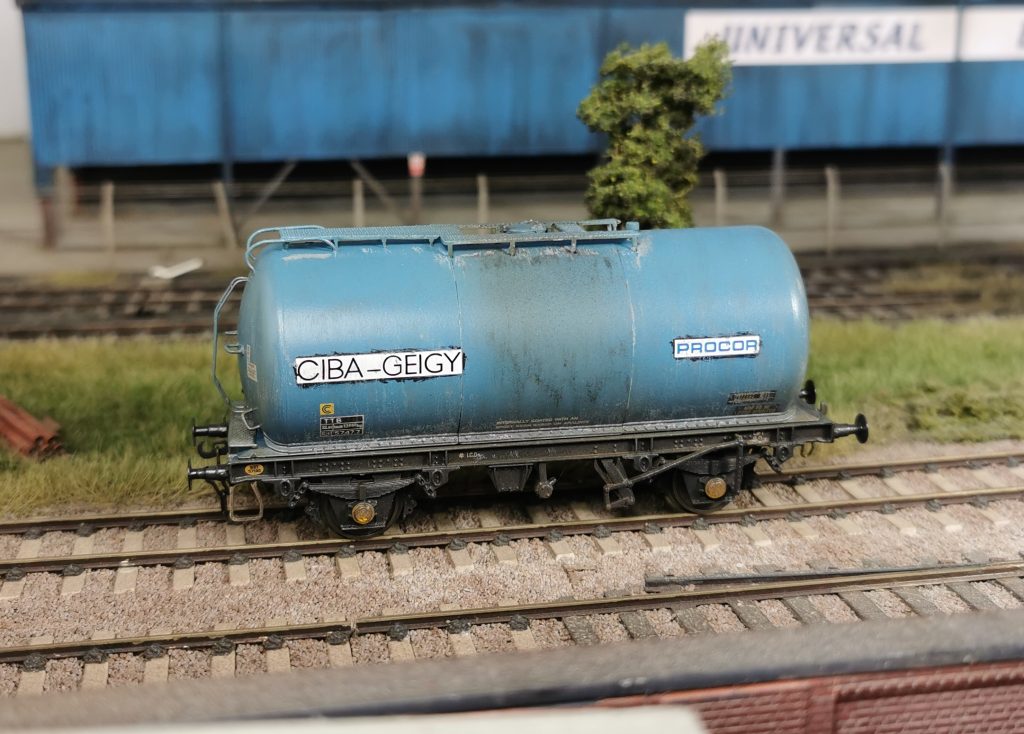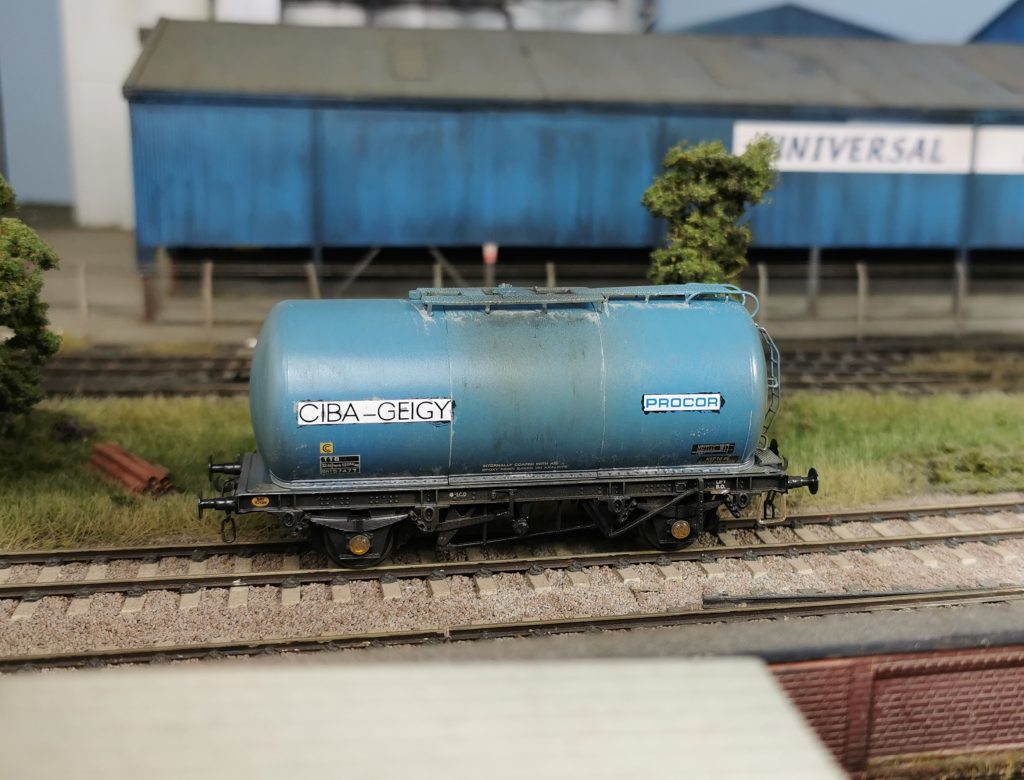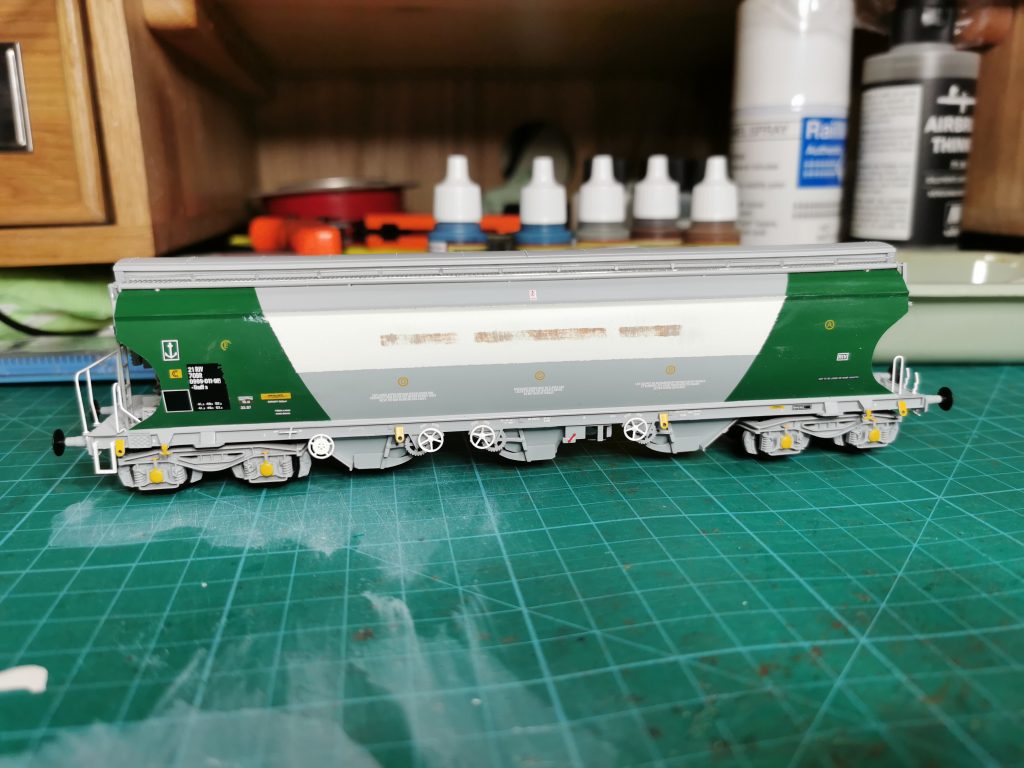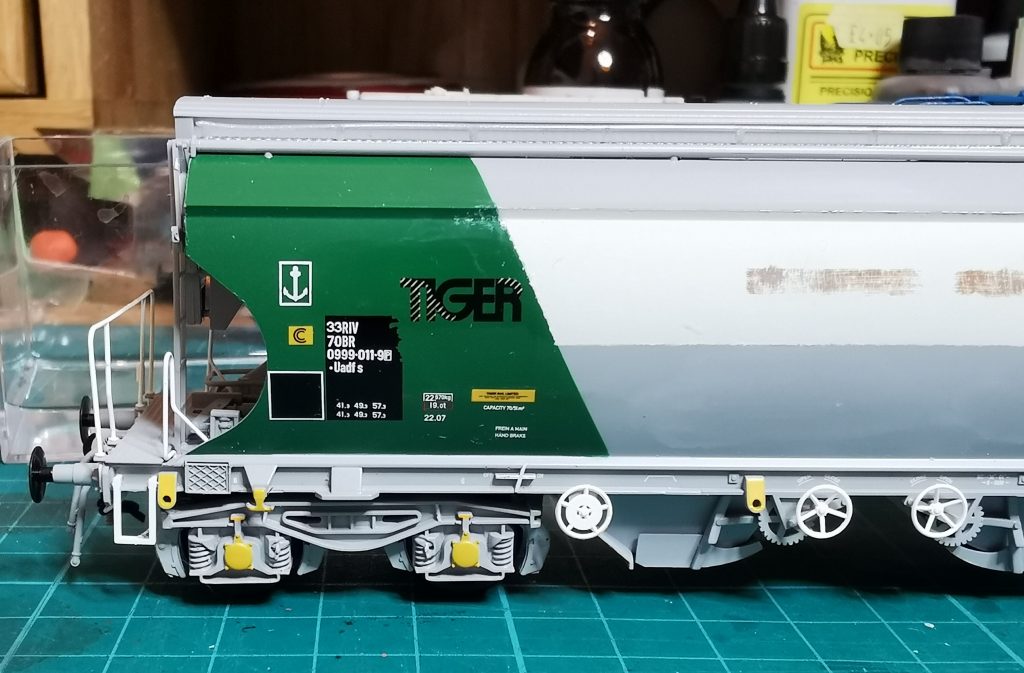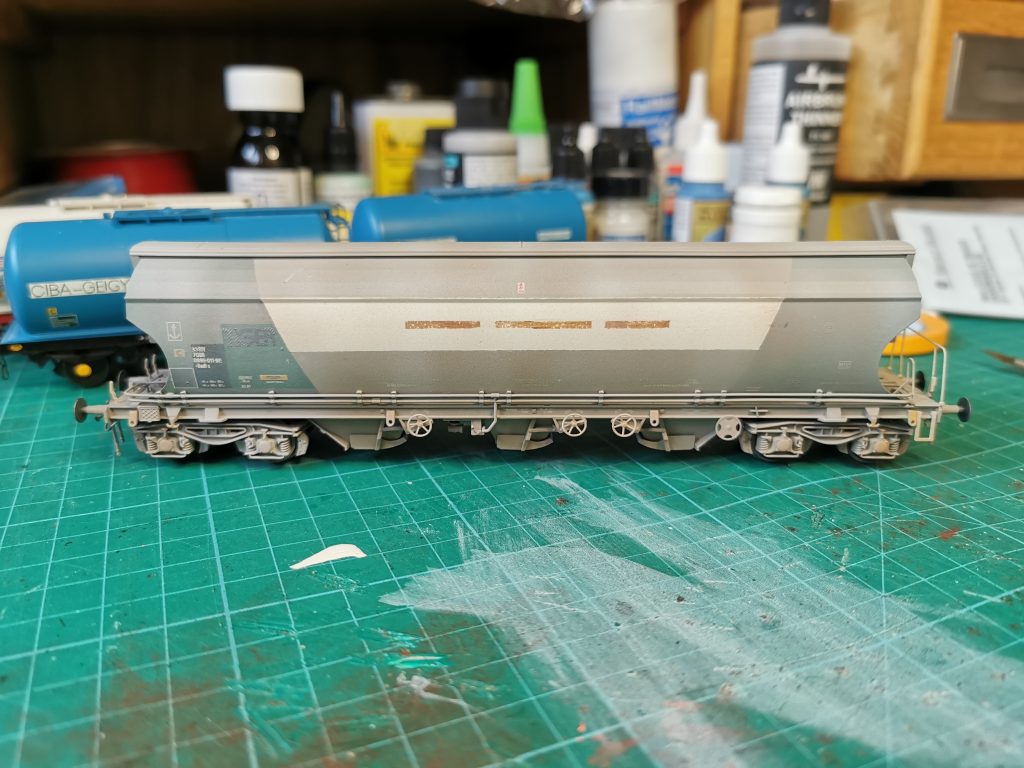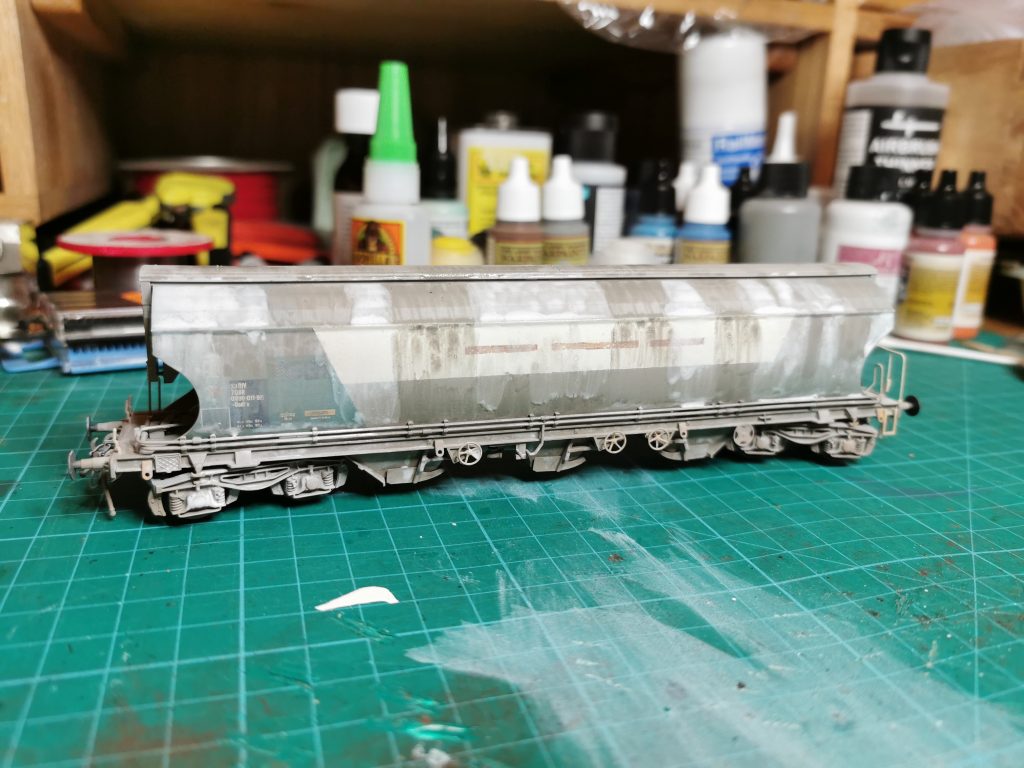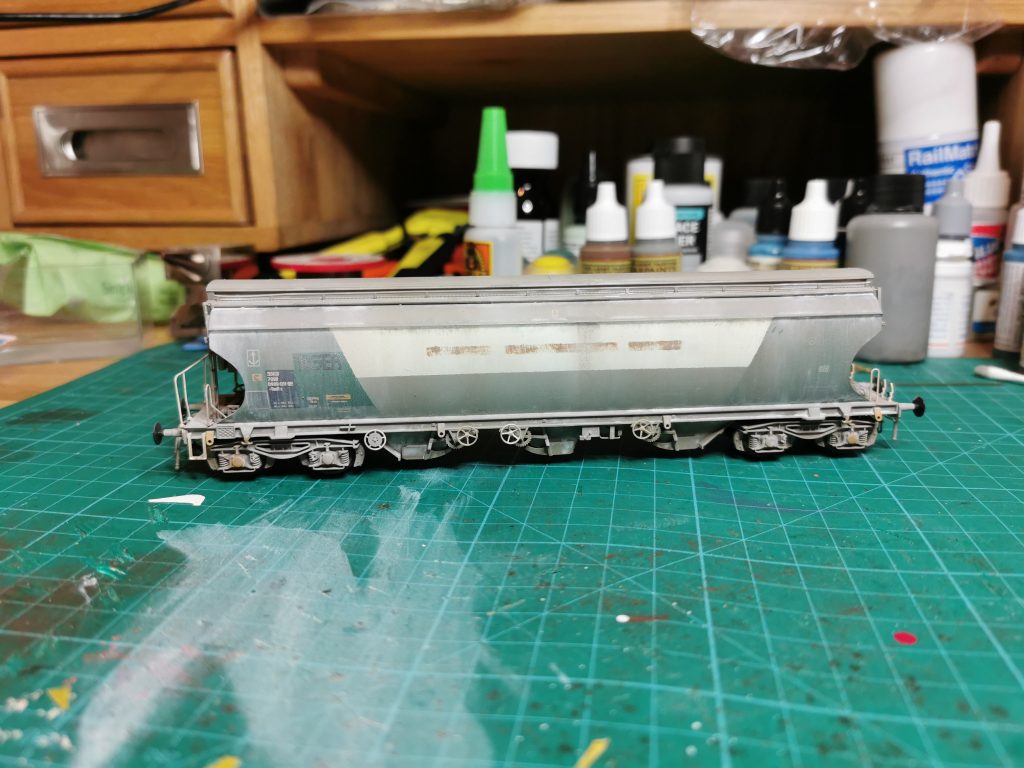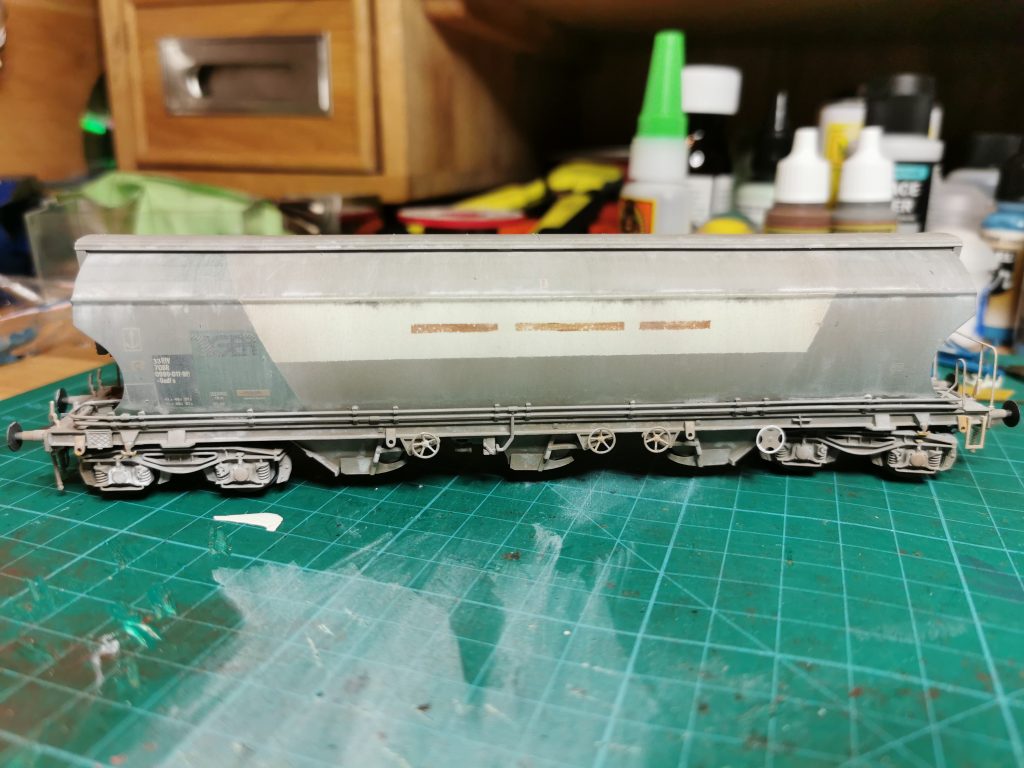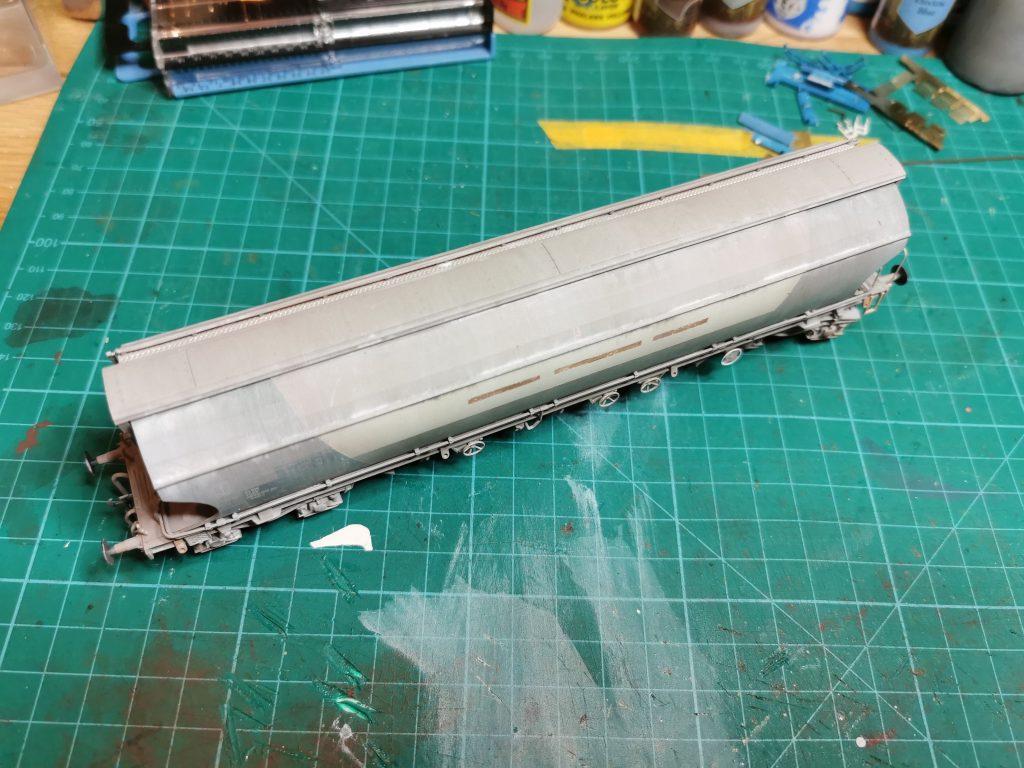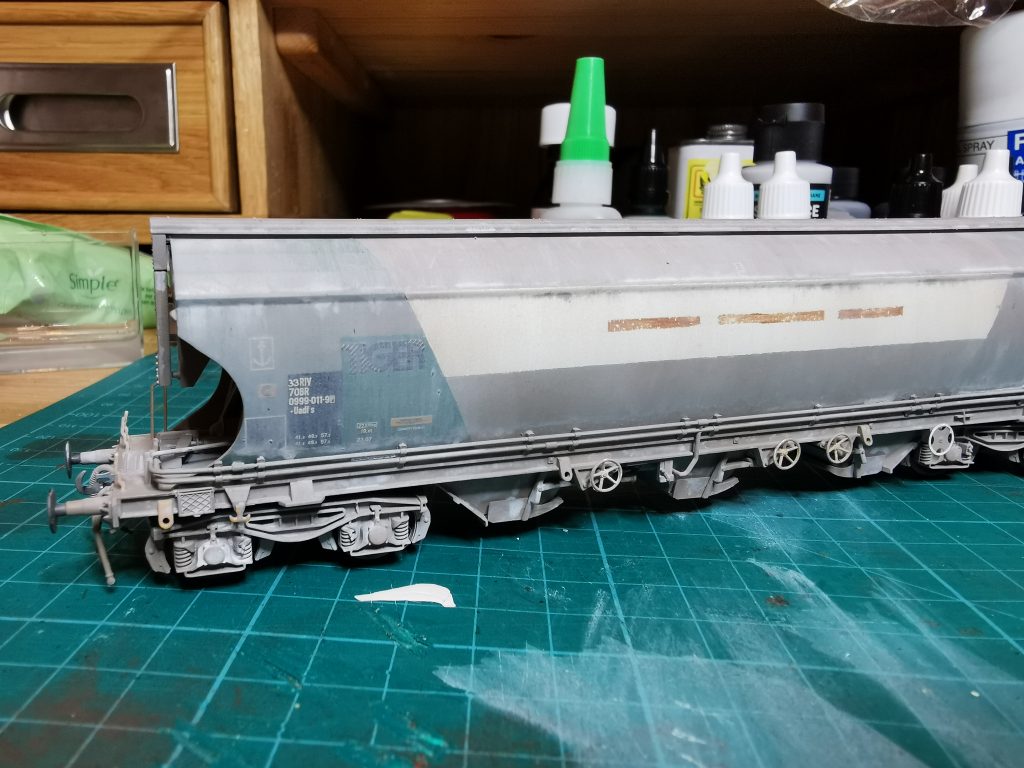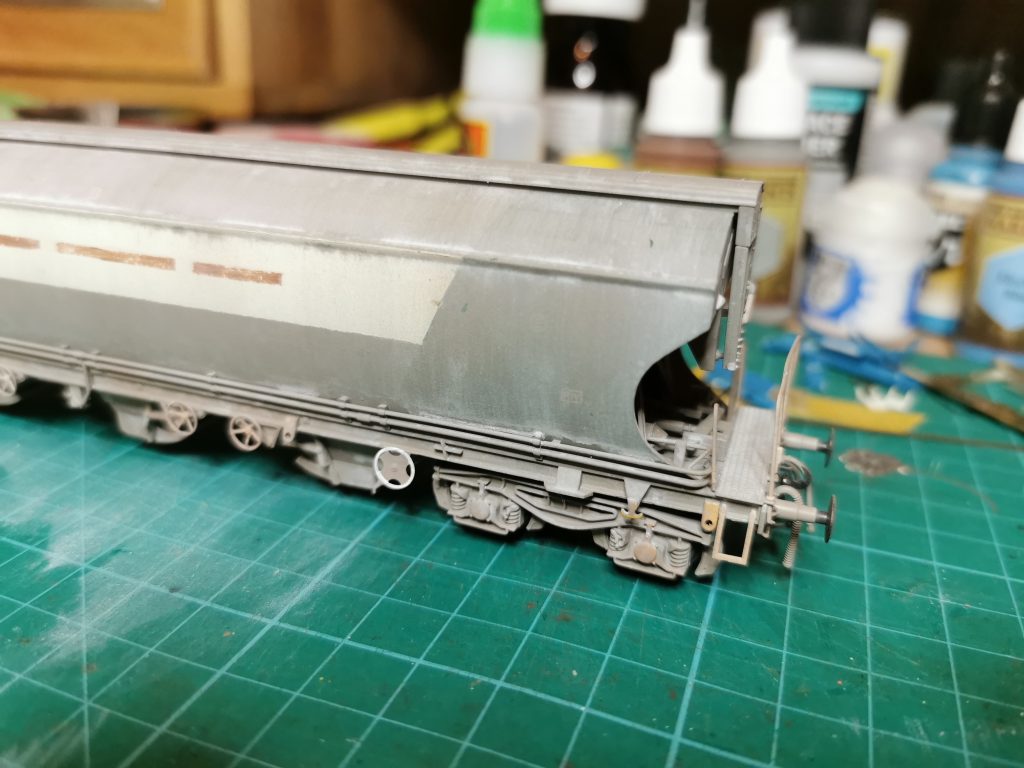I’ve recently purchased two of these Hornby brake vans at a bargain price of £14.95 each. So, thoughts soon turned to what I would do with them.
For this one, I’ve found a prototype photo on Paul Bartlett’s website which I’m going to use as a guide.
I started by removing the handrails and dismantling the van. I also drilled out the handrail holes making them slightly wider, which aids refitting and prevents them from looking bent. I then removed the numbers and markings with Isopropyl Alcohol, and masked the door and ducket windows with Vallejo masking fluid.

Next, I primed the van with Vallejo grey primer through the airbrush. The following day, once this had dried properly, I sprayed the faded Dutch yellow using a mixture of Games Workshop Phalanx Yellow and Scar White. Once dry the yellow was masked up and Army Painter Ash Grey was sprayed on the remainder of the body.

I applied gloss varnish with a brush to areas that required transfers. I find this speeds up the process, rather than airbrushing it. And the end result isn’t compromised. Then the transfers were applied and another coat of gloss varnish added to secure them permanently.
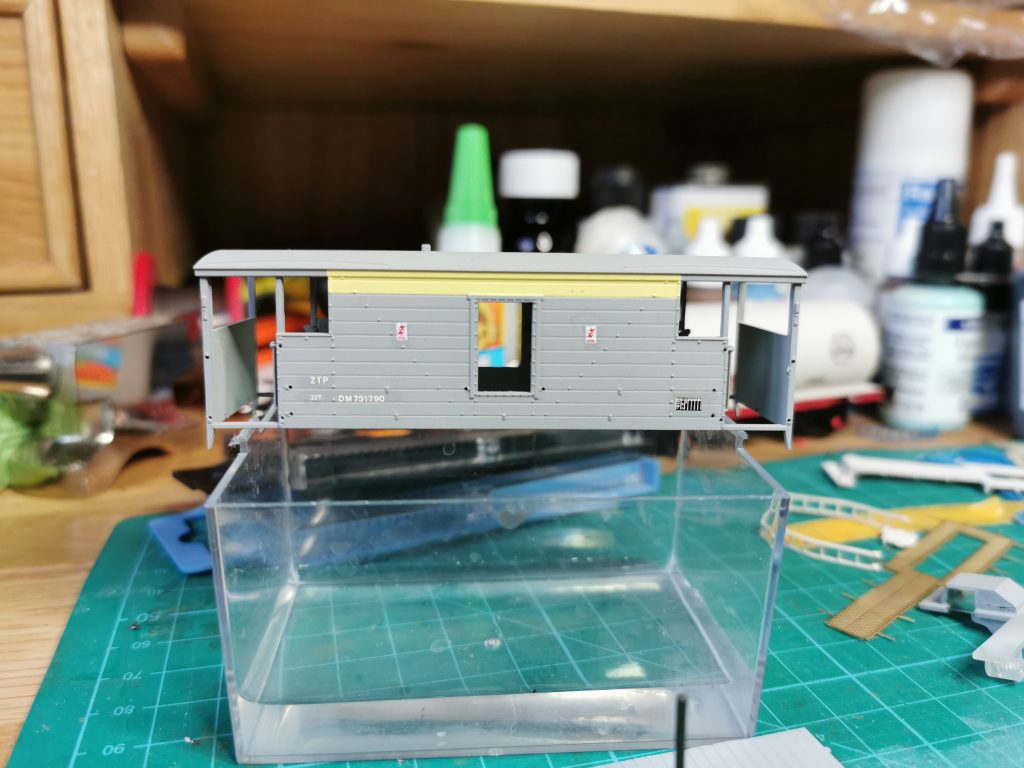
Note the electrification flashes. The one on the right is offset while the other is central.
The roof was next to be painted so Charcoal Grey was sprayed with the airbrush, after some careful masking. More Vallejo masking fluid was used over masking tape seams as a precaution. There is nothing worse than unnecessary overspray from poor masking!
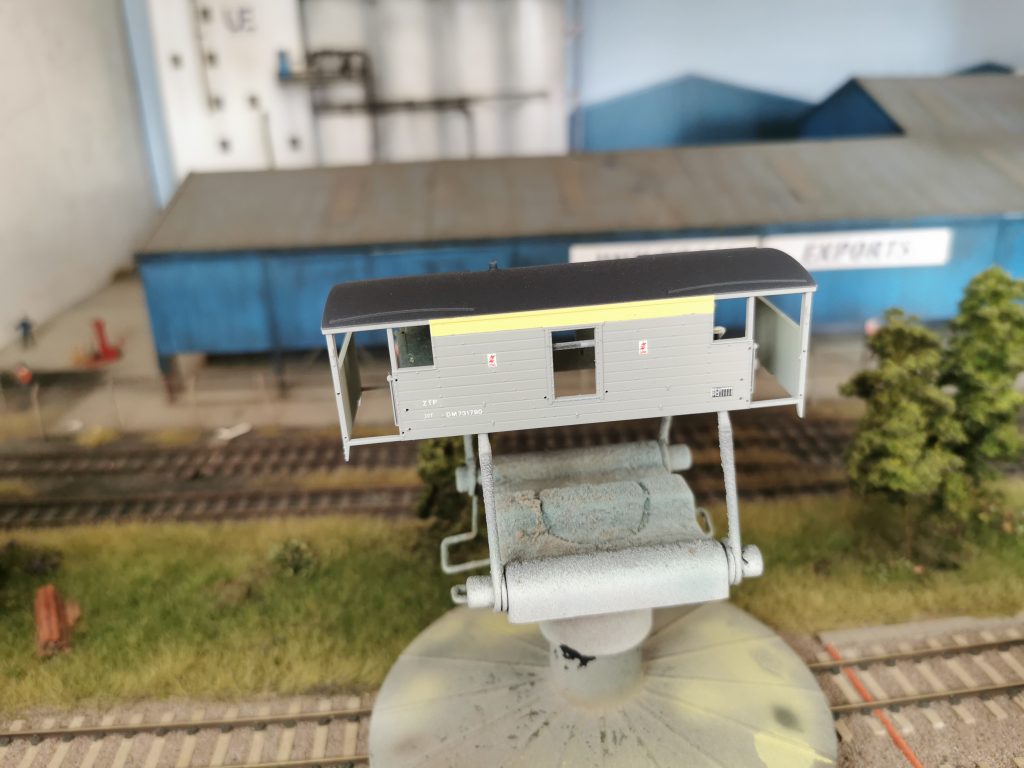
A coat of matt varnish was sprayed from a rattle can. I’ve used many different brands of rattle can varnish over the years, but one I always recommend is Colour Forge. The finish is second to none.
Final tasks before weathering was to paint the lamp irons white and glue the handrails back in place.

Weathering consisted of 3 colours applied lightly through the airbrush. Ash Grey, Brown Leather and Light Rust. The roof was also given a light blow over with Ash Grey, just to take the newness off the dark grey.
